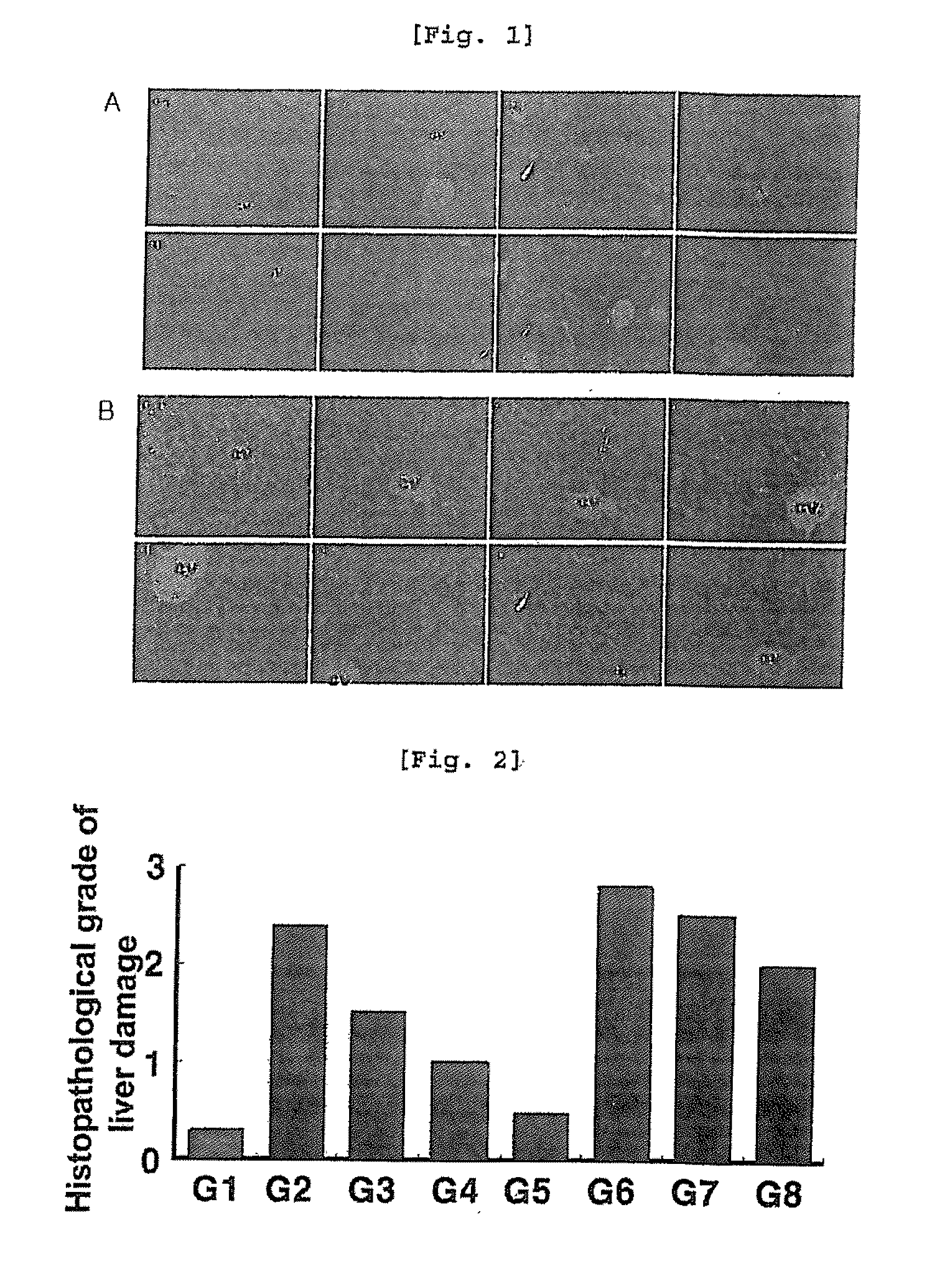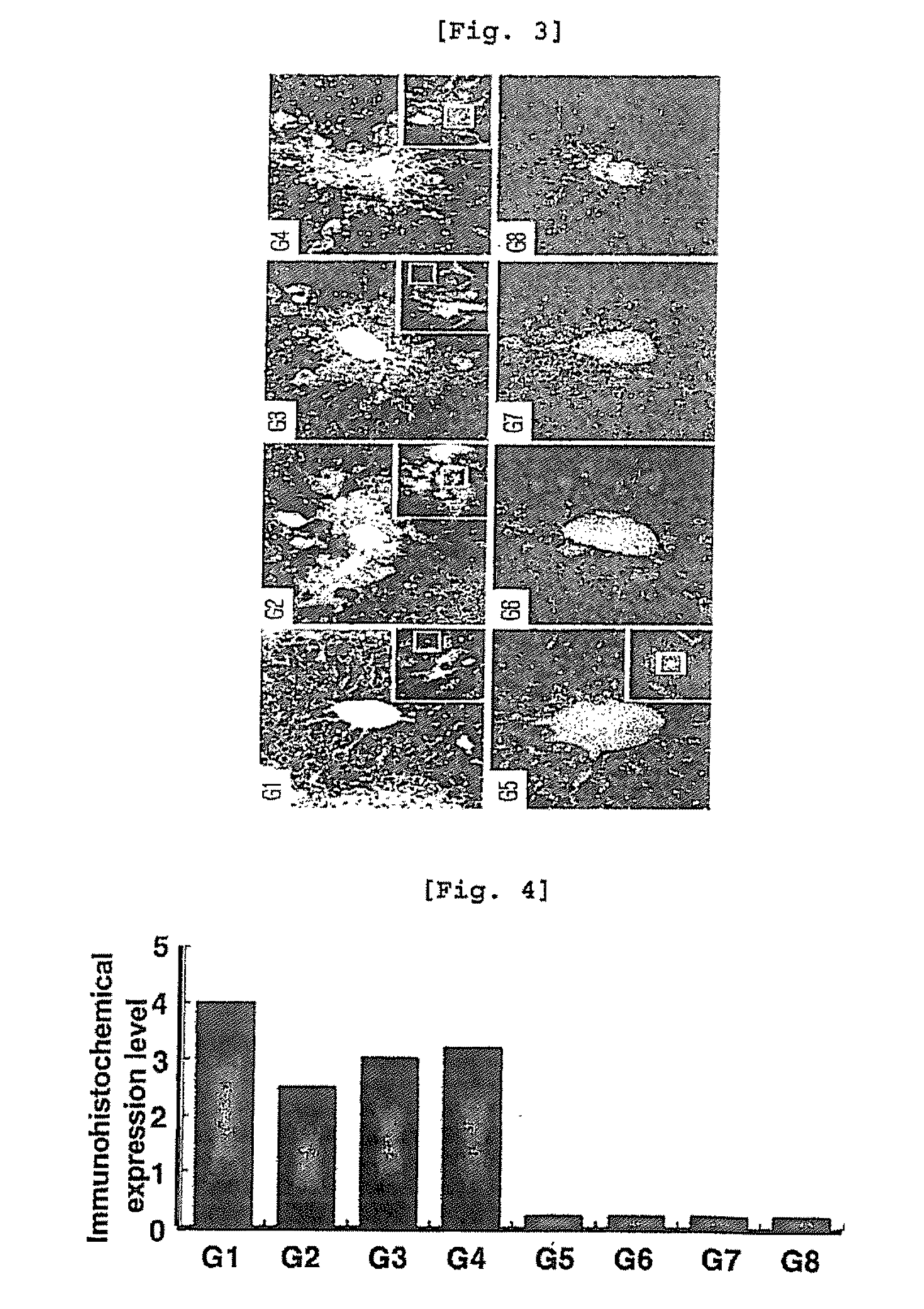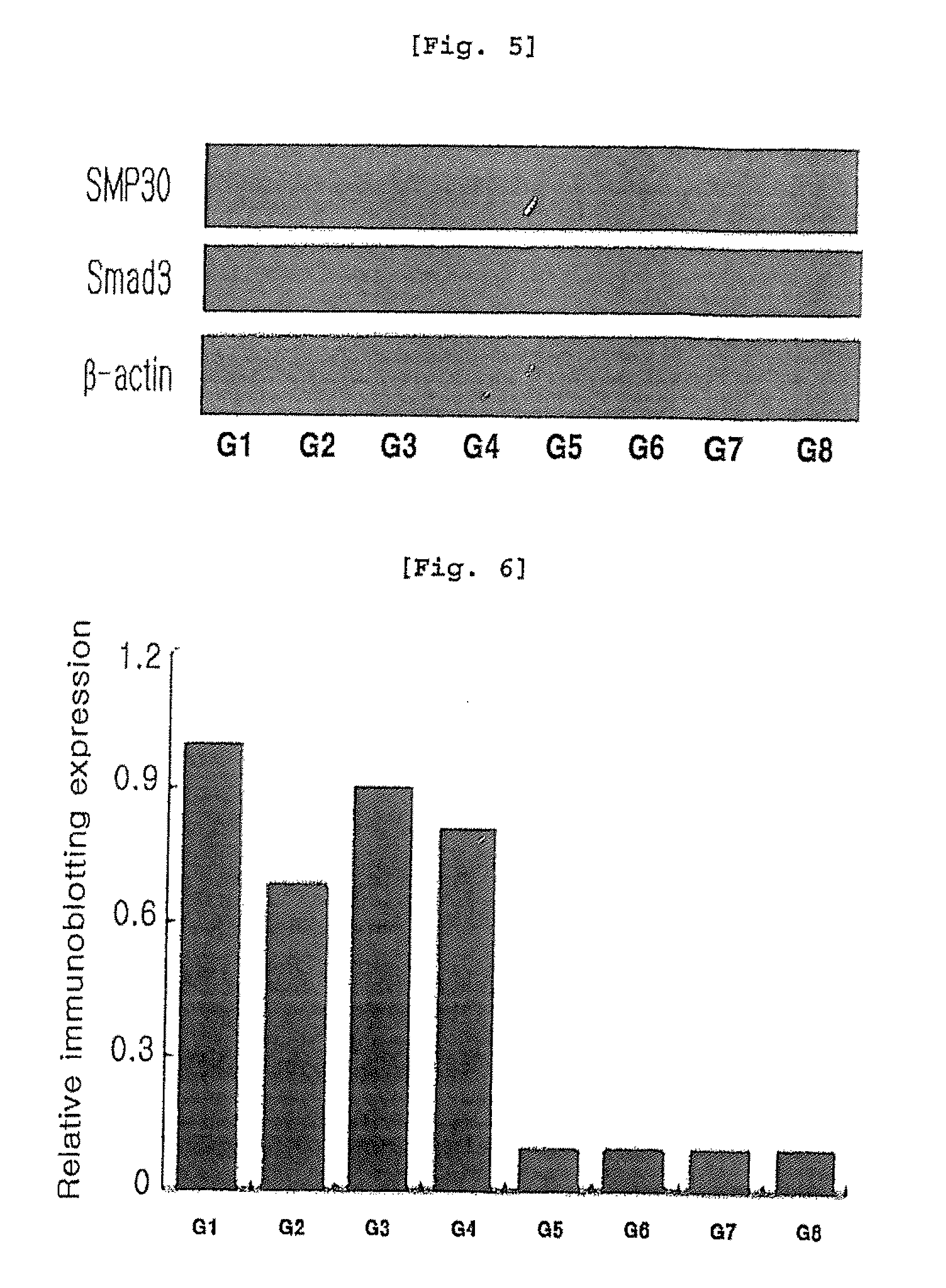Pharmaceutical composition containing arazyme for the prevention of liver dysfunction
a technology of arazyme and composition, applied in the direction of drug composition, peptide/protein ingredients, food preparation, etc., can solve the problems of drug side effects, drug compositions, drug interactions, and no effective therapeutic agent or diagnostic method established,
- Summary
- Abstract
- Description
- Claims
- Application Information
AI Technical Summary
Benefits of technology
Problems solved by technology
Method used
Image
Examples
example 1
Production of Arazyme
[0074]To produce the active ingredient ‘arazyme’, Aranicola proteolyticus HY-3 (KCTC 0268BP) was cultured in a culture medium (bacto trypton 0.5%, yeast extract 0.5%, sodium chloride 0.1%, potassium chloride 0.05%, calcium chloride 0.02%, magnesium sulfate 0.02%) at 22° C. for 18 hours. The supernatant and cells were separated from the culture solution by membrane filtration using a 2 μm membrane filter. The separated supernatant was concentrated by 10 kDA membrane filtration. Arazyme of the present invention basically exhibits the characteristics of anions. So, arazyme was purified by ion exchange resin using DEAE-cellulose pre-treated with 50 mM tris-HCl buffer (pH 7.6) and gel filtration exchange resin using Sephadex G-75 pre-treated with 20 mM tris-HCl buffer (pH 7.6). The purified enzyme solution proceeded to 10% SDS-PAGE (Sodium dodecyl sulfate-polyacrylamide gel) for electrophoresis. As a result, it was confirmed that arazyme of the present invention was ...
experimental example 1
Constitution of Experimental Groups and Administration
[0075]SMP30 is an important marker protein for aging and is involved in vitamin C biosynthesis, suggesting that SMP30 acts as an antioxidant by increasing vitamin C synthesis. In the present invention, male wild type C57BL / 6(WT) at 12 weeks and SMP30 knock-out C57BL / 6(KO) mice were used to induce liver injury by CCl4 and then the relation of SMP30 with arazyme was investigated. 10 male and 20 female SMP30 knock-out C57BL / 6 mice were distributed from Tokyo Metropolitan Institute of Gerontology, which were then raised in the animal laboratory at Department of Pathology, College of Veterinary Medicine, Kyungpook National University, Korea. Among F1 mice generated by breeding, knock-out mice were selected by tail DNA genotyping by PCR.
[0076]Wild type mice were quarantined and adapted for 7 days in the animal laboratory. During the adaptation, every symptom was checked and only healthy animals were selected. Both wild type and SMP30 k...
experimental example 2
Histopathological Observation on Liver Cells
[0084]To examine the effect of arazyme on liver injury by CCl4 according to histopathological test, each liver sample taken from autopsy was fixed in 10% neutral formalin and the fixed tissues were treated by the automatic tissue processor. The treated liver cells were paraffin-embedded and cut into 4 μm thick sections. The sections were dried and stained with hematoxylin-eosins (H&E staining), followed by observation under optical microscope.
[0085]As a result, centrilobular necrosis and inflammation were observed in SMP30 knock-out mice (G5, G8), compared with wild type mice (G1, G4). And necrosis in liver cells was significantly inhibited in both wild type mice (G1, G4) and SMP30 knock-out mice (G5, G8) treated with vitamin C and arazyme (FIGS. 1 and 2).
[0086]Numerical values on liver injury obtained from histopathological observation are shown in Table 2.
TABLE 2Numerical values on liver injury obtained by histopathological observationLe...
PUM
| Property | Measurement | Unit |
|---|---|---|
| temperature | aaaaa | aaaaa |
| pH | aaaaa | aaaaa |
| thick | aaaaa | aaaaa |
Abstract
Description
Claims
Application Information
 Login to View More
Login to View More - R&D
- Intellectual Property
- Life Sciences
- Materials
- Tech Scout
- Unparalleled Data Quality
- Higher Quality Content
- 60% Fewer Hallucinations
Browse by: Latest US Patents, China's latest patents, Technical Efficacy Thesaurus, Application Domain, Technology Topic, Popular Technical Reports.
© 2025 PatSnap. All rights reserved.Legal|Privacy policy|Modern Slavery Act Transparency Statement|Sitemap|About US| Contact US: help@patsnap.com



